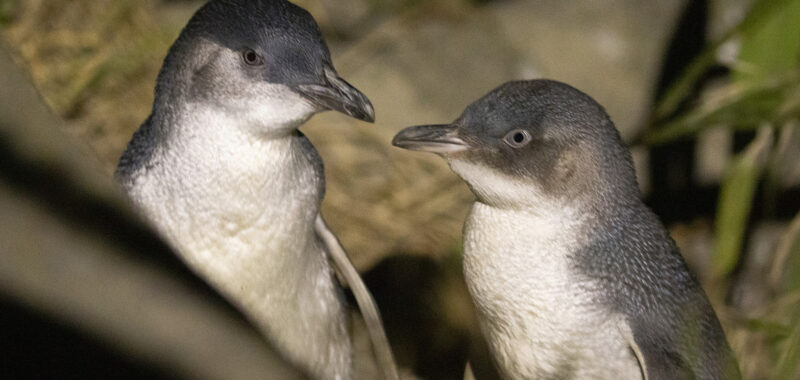Relationships can be fickle. Sometimes they just don’t work out, even in penguins that can mate with the same partner for several years. The little penguins (Eudyptula minor) that live on Phillip Island in Australia have been found to “divorce” their partners and find a new mate if they don’t appear to be satisfied with the number of offspring they have produced. However, this is a risky decision that can lower the success in their next breeding attempts. The findings are detailed in a study published January 11 in the journal Ecology and Evolution.
Phillip Island is home to the world’s largest colony of little penguins–almost 40,000 birds. These sea birds are the smallest penguin species on Earth. Little penguins are slightly bigger than a standard bowling pin at about 12 to 14 inches tall and weighing roughly 3 pounds. Also called little blue or fairy penguins, these birds are found in Australia and New Zealand. The colony on Philip Island is home to a popular Penguin Parade that attracts thousands of visitors each year. People can watch them waddle home from the ocean to their burrows at dusk.
This new scientific deep dive into the love lives of little penguins was conducted over 10 years and 13 breeding seasons. Scientists were looking to determine what little penguin pairings can predict about the colony’s reproductive future. According to Richard Reina, a study co-author and at Australia’s Monash University, not all penguins partner for life.
“In good times, they largely stick with their partners, although there’s often a bit of hanky-panky happening on the side,” Reina said in a statement. “However, after a poor reproductive season they may try to find a new partner for the next season to increase their breeding success.”
During these 13 breeding seasons, the team tracked which individuals changed partners–or divorced–from one season into the next.
“We recorded nearly 250 penguin divorces from about a thousand pairs throughout the study, and we found that years with a lower divorce rate resulted in higher breeding success,” said Reina.
The rate of divorce among the penguins appears to be a more reliable predictor of reproductive success than environmental factors–like habitat change–or behavioral traits, including the amount of time they spend looking for prey. More divorces and then re-pairings in a breeding season results in lower reproductive success across the whole colony.
[ Related: Tiny fossil reveals when penguins evolved their surprisingly useful wings. ]
The team believes that the divorce rate was a better predictor of success since it was more accurately correlated with breeding rates than the environmental or behavioral factors. Understanding these dynamics can help protect these and other species around Philip Island.
“Our findings on lower divorce rates among little penguins at Phillip Island under favourable environmental conditions highlight the importance of considering social dynamics alongside environmental factors when designing strategies to protect vulnerable seabird species,” Andre Chiaradia, a study co-author and Phillip Island Nature Parks Marine Scientist, said in a statement.


